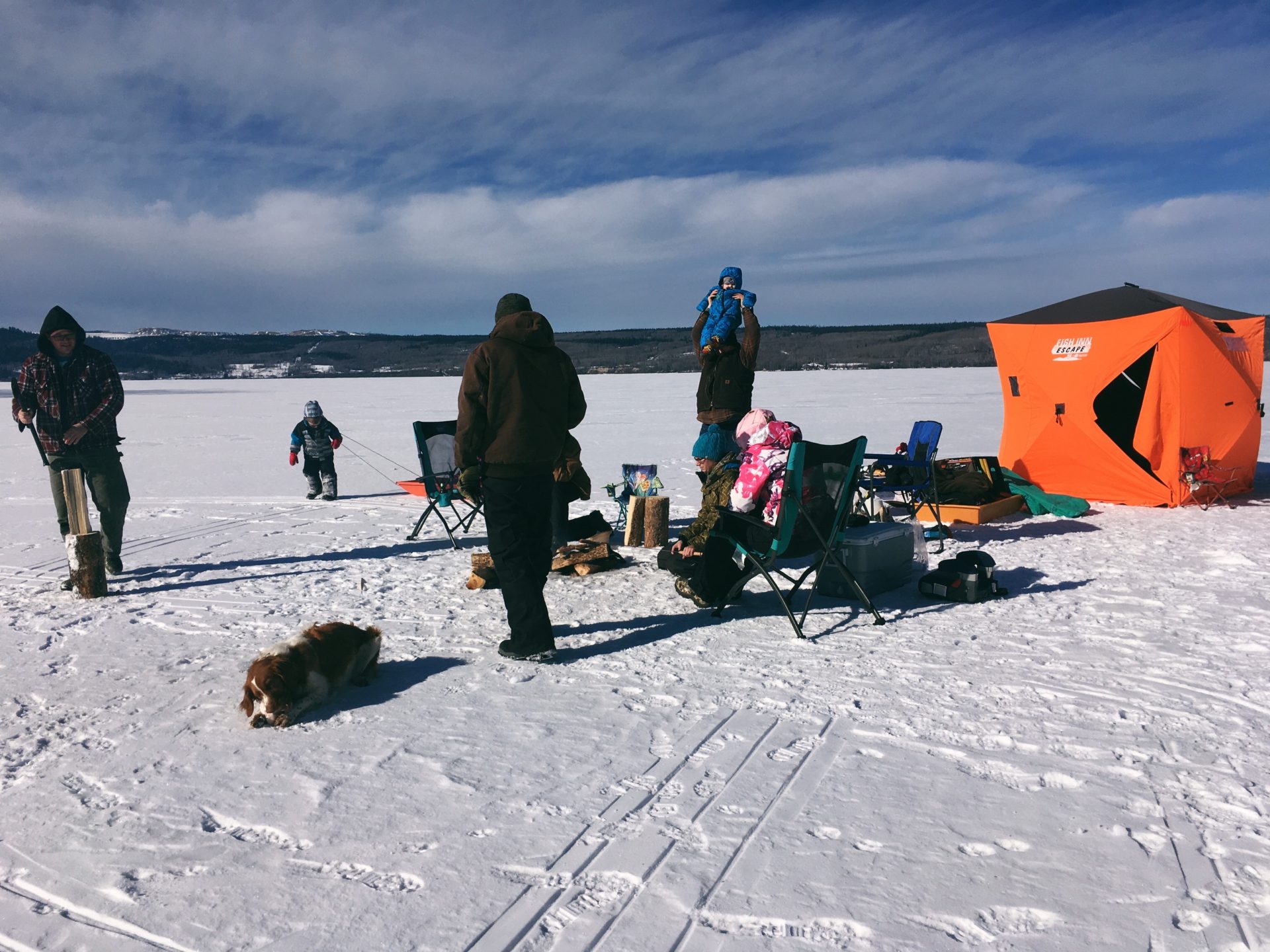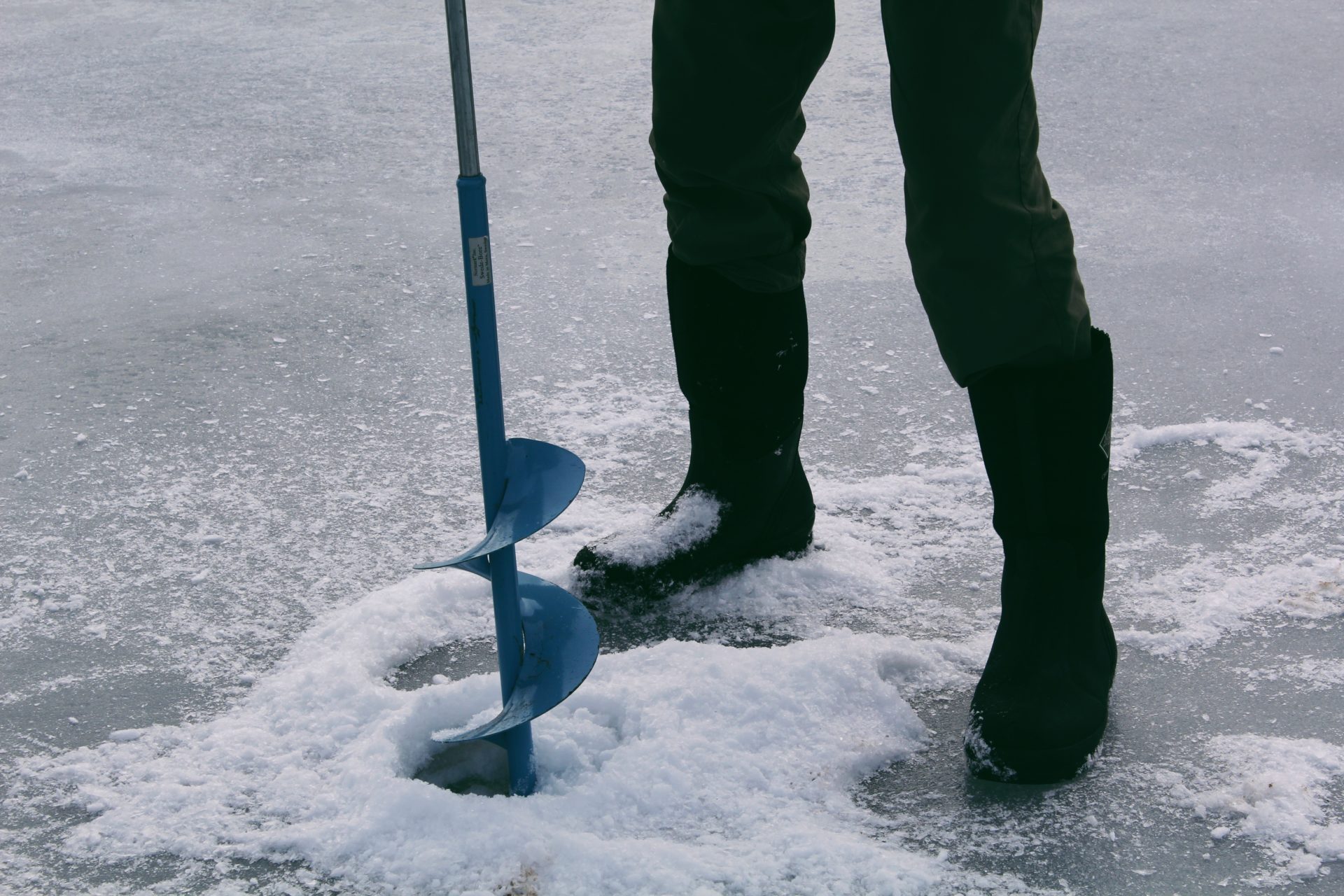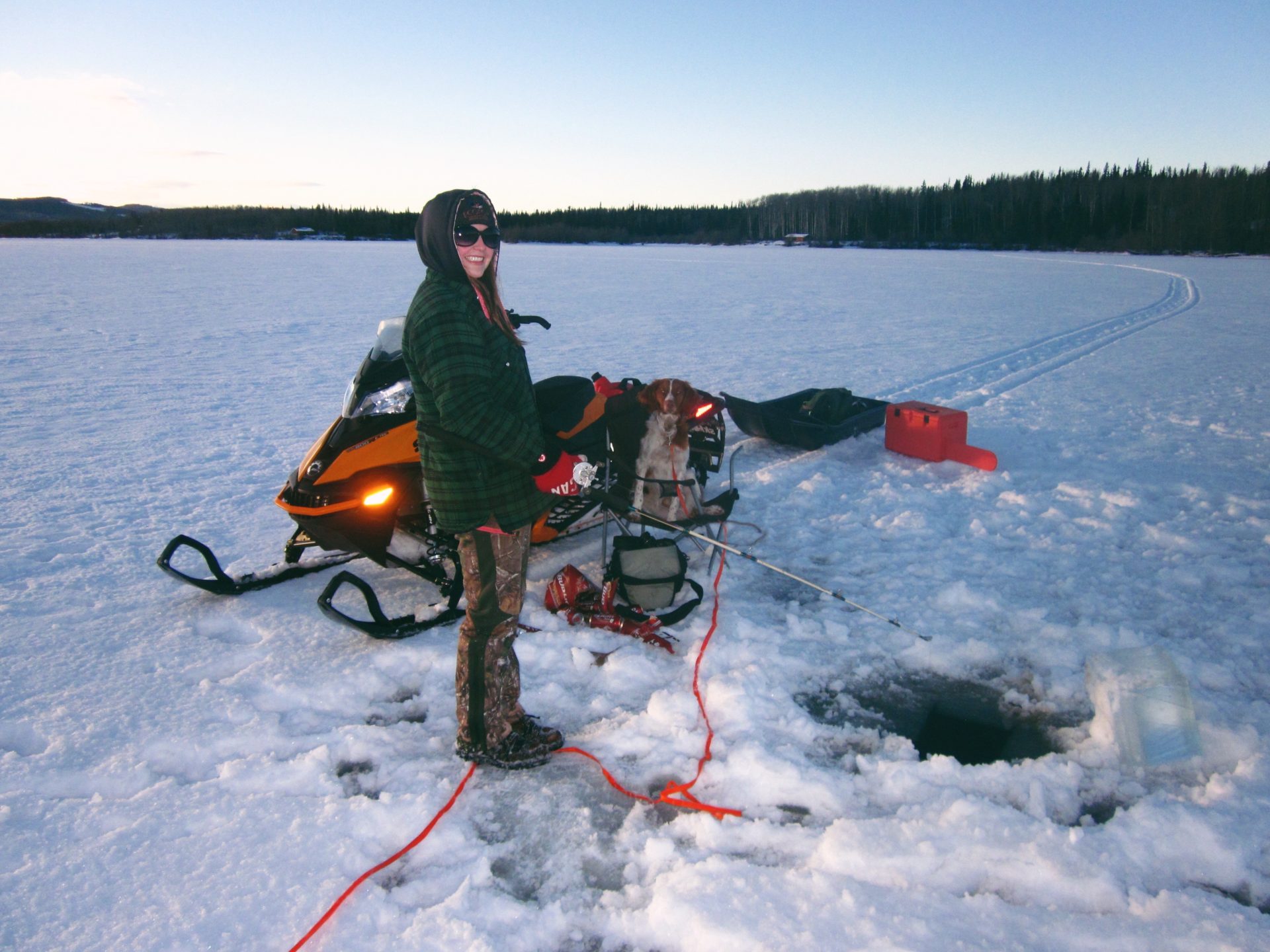The temperatures are dipping, the snow is falling… that can only mean one thing. It’s time to get out the ice fishing gear! Ice fishing is a fun and inexpensive hobby for the whole family, and a great excuse to get outside in the winter.
Advertisement

Ice Fishing Gear
It can be easy to get swept away in the all the fancy gear for ice fishing you might see on TV. Fish finders, large tents or huts, heaters, gas-powered ice augers, fancy tackle and rods are all nice to have, but aren’t necessities. To break it down to the bare essentials, you will need:
- Ice fishing rod and reel (you can find both for under $50)
- Terminal tackle (you can pick up little kits at any outdoor store that include hooks, basic tackle, etc.)
- Ice auger or axe to make a hole in the ice
- A bucket or chair to sit on
- Bait
- A valid fishing license

You can get set up to go ice fishing incredibly cheap. Of course, there are the aforementioned upgrades that might be worth considering if you plan on doing a significant amount of fishing, but don’t worry about that if you’re first starting out. If I am headed out for a long day of fishing, it is really nice to have a gas or electric-powered auger, and an ice tent to cut down on the wind chill on those cold February days. Slush scoops, to clear any snow or ice out of your hole once it is drilled, are also worth bringing along, to save your hands from the cold water.
Advertisement
Ice Safety
While it is important to be hyperaware of your surroundings while on the ice at any point, early and late-season trips require a little more diligence. Avoid ice that is near inflows, outflows or moving water, and continually check ice thickness as you head out to your fishing spot by drilling test holes in the ice (and a heads up – ice near the shore is often thin). The Canadian Red Cross says that ice must be 15 centimetres thick for walking alone, 20 centimetres for a group and 25 centimetres if using snowmobiles.

Ice colour can also give you some clues to the condition of the ice. Clear, blue ice is the strongest, and is the quality of ice used for a baseline for ice safety charts. White ice, which is formed when the slush layer between snow and the ice surface freezes, is less strong. Finally, grey ice is indicative of rotten/melting ice – do not go out on grey ice under any circumstance.
Advertisement
Ice safety picks are a cheap, easy item to throw over your shoulders when on the ice. If you should fall through, you can use the ice picks to pull yourself up and out of the water, when you otherwise may have a hard time getting out.